Narasimha Avatar of Lord Vishnu: Story & Significance
Narasimha Avatar of Lord Vishnu: In order to save the universe from evil, Lord Vishnu had 10 Avatars. These are…
 0%
0%

4 Vedas Name: The Vedas are known as the inspiration of Sanatan Dharma. The word “Veda” means knowledge, and this knowledge applies in all dimensions, not only to religious traditions but also to all aspects of life.
The Vedas teach a person how to engage in spiritual practices, how to engage in social behaviours, and how a person can conserve and purify their own life as they maintain their balance with nature.
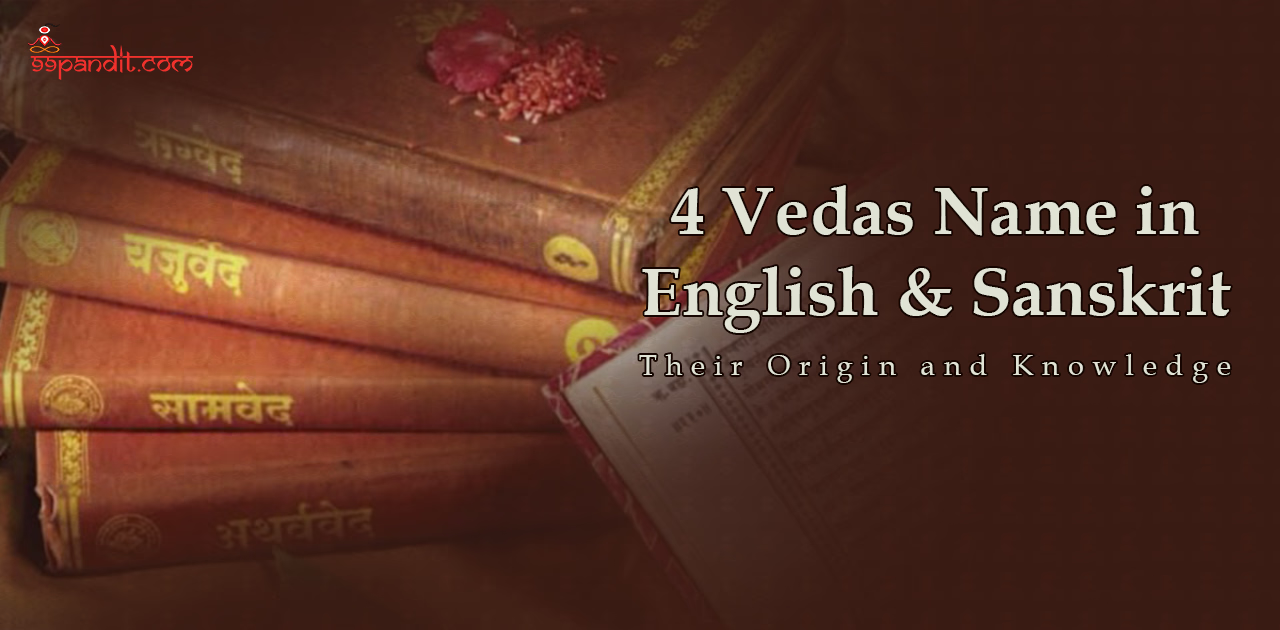
Perhaps that is the reason they are the oldest and most reliable source of human civilization.
The four Vedas’ names are not human creations, but God-based knowledge, obtained by sages and saints, through dedication and meditations, which were later protected and shared through oral tradition from generation to generation.
Because of this, the Vedas are as pure as they were thousands of years ago and relevant to today’s human existence.
In this article, we will learn the Sanskrit and English names of the 4 Vedas, and understand the mystery of their origin and creator.
We will discuss the knowledge and topics contained in each Veda, their significance in Sanatan Dharma, and the story of their preservation by oral tradition.
We will see the relevance of the Vedas in modern life and how they guide us even today.
The four Vedas of Sanatan Dharma are not just names, but are treasures of infinite knowledge. Each Veda has its own name in Sanskrit, and its English form is also popular.
The four Vedas in both Sanskrit and English are as follows: –
ऋग्वेद (Rigveda):
The first is the Rigveda, which is mainly a collection of mantras and hymns. It contains praise, prayers, and descriptions of the glory of various gods. This Veda is considered to be the soul of the Vedas.
यजुर्वेद (Yajurveda):
The second is the Yajurveda. It describes the methods, mantras, and rituals of yagya and havan in detail.
सामवेद (Samaveda):
The third is the Samaveda. It is called the father of music because it has a tradition of presenting hymns through singing.
The mantras of the Samaveda are sung, so it is an excellent combination of both spirituality and music.
अथर्ववेद (Atharvaveda):
The fourth is the Atharvaveda. This Veda brings forth the practical and scientific side of life. It gives solutions to daily life problems, like medicine, astrology, Vastu, and mantras.
Together, these four Vedas reveal the knowledge of the Vedas, which enlightens human life in all directions, religion, karma, music, and science.
The origin of the Vedas and the description of their creator is one of the deepest mysteries of Hinduism.
The Vedas are not just religious texts; they are considered to be eternal knowledge given by God.
It is clearly stated in the scriptures that the Vedas are not the creation of any man, but they appeared from the sound form of God himself.
That is why they are called “Shruti“, which means the knowledge that has been heard. The Vedas’ origin is linked to the very origin of the universe itself.
It is thought that when creation began, sound, or shruti, originated first, before any other creation. This divine sound, shruti, later took the form of the Vedas.
The Vedas are referred to as apaurusheya, or as being not sung, written, or otherwise created by man. They are eternal truths that came into being at the same time as creation.
The Puranas discuss that when God assigned the responsibility of creation to Brahma Ji, he was imbued with divine knowledge, knowledge that is now called the Vedas.
Considering the Vedas as a collection of religious mantras only would be underestimating their depth.
In fact, each Veda contains within itself the knowledge of a particular aspect of life and the universe.
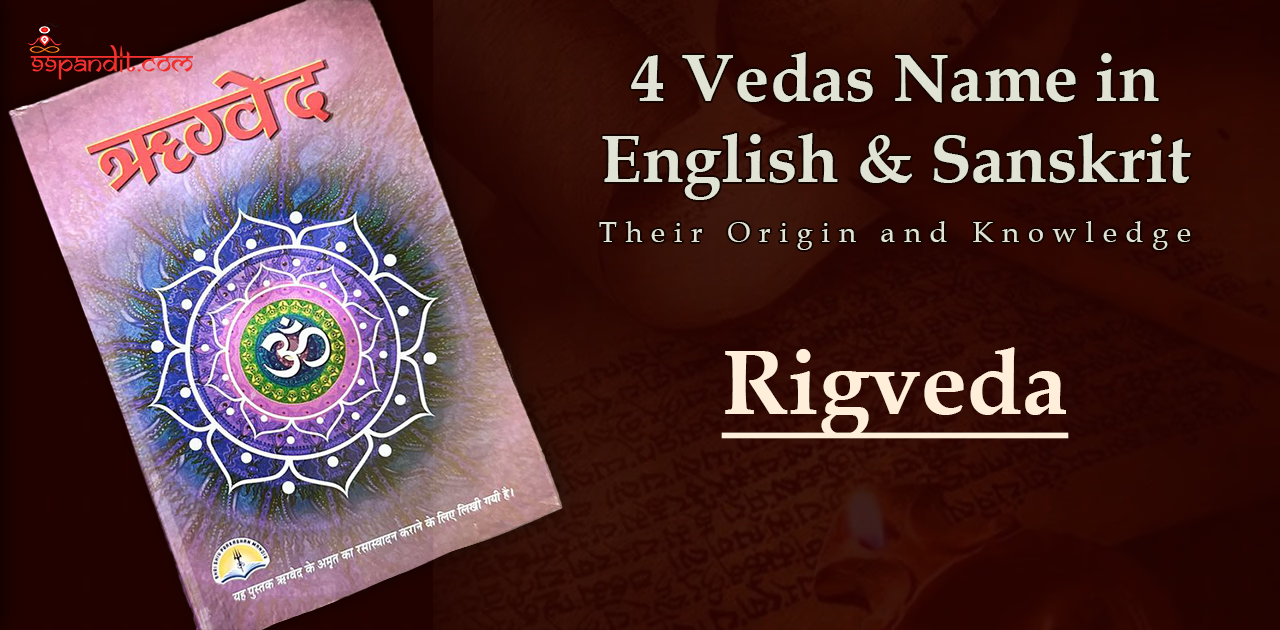
All four Vedas together illuminate all aspects of spirituality, science, art, and life.
The Rigveda is considered to be the oldest and most important Veda. It consists of about 10 mandalas and 1028 suktas.
The Rigveda mainly contains hymns (mantras or praises), which describe the glory of gods like Agni, Indra, Varuna, Mitra, Usha, etc.
Its primary purpose is to make man grateful to God through the praise and prayer of the gods.
The Rigveda also provides amazing knowledge of life philosophy, the origin of the universe, the forces of nature, and the social system. This Veda teaches us that life is incomplete without prayer and devotion.
Yajurveda is called the Veda of rituals and yajna. It is a mixture of prose and mantras that explains the method of performing yajna and its importance.
Yajurveda explains how havan and yajna purify the environment and also purify the soul of man.
It has 40 chapters (adhyayan), which mention various rituals, yajna-methods, and sacrifice mantras.
Yajurveda teaches that knowledge and action are necessary. Dharma is established only through right action and conduct.
Samaveda is called the Veda of music and voice. It has about 1875 mantras, most of which are taken from the Rigveda, but they are presented in a singable tone and rhythm.
The importance of Samveda lies in the fact that it shows us that spirituality is not limited to reading scriptures or performing yagna. Still, God can also be attained through music and devotion.
The tradition of Indian classical music and ragas and raginis developed on the basis of the Samveda, which is why it is also called the “Father of Indian Music.”
Atharvaveda is considered the Veda of practical life and science. It has about 20 chapters and 730 suktas.
It contains knowledge of medicine, prevention of diseases, Astrology, Vastu Shastra, Mantra-Tantra, and solutions to problems of daily life.
This Veda teaches us that, along with spirituality, it is important to make physical life happy and healthy.
It also provides detailed knowledge on topics related to marriage, children, family life, and society.
The four Vedas touch every aspect of human life. The Rig Veda teaches us to praise God, and the Yajur Veda teaches us the method of right action and sacrifice.
The SamVeda inspires music and devotion, and the Atharva Veda gives solutions to problems of health, medicine, and practical life.
Thus, the Vedas are not only the basis of religious faith, but also guide the art of living a complete life.
The Vedas are considered to be the foundation of Sanatan Dharma. If there were no Vedas, the form of religion would have remained incomplete.
Vedas are not just scriptures; they are the divine sound that introduced man to the true nature of God, nature, and soul. That is why they are called “Eternal knowledge.”
The Vedas tell us that religion is not limited to worship but is a complete way of life. The Rigveda has the importance of devotion and prayer, and the Yajurveda shows the path of right karma and yagya.
Samveda makes music and devotion a sadhana, and Atharvaveda gives solutions to the practical needs of life.
Thus, all four Vedas together teach that the real meaning of religion is truth, conduct, devotion, and good deeds.
The Vedas gave direction to Indian society and culture. The basis of family, marriage, education, roles of men & women, agriculture, business, and even politics is found in the Vedas.
The Vedas taught man that society can flourish only when all people perform their duties and remain truthful.
This is the reason why even today in Indian culture, Vedic mantras are recited in marriage, upanayan, yagna, Grihapravesh, and even death rituals.
The Vedas tell us that God is one and that he is the basis of the whole creation. Man can attain self-knowledge through devotion, prayer, yagna, and sadhana.
The Vedas also teach that the soul is immortal and that birth and death are only a change of body.
With this knowledge, man can live life at a higher level, free from fear, attachment, and greed.
The Vedas are not only spiritual texts but also the basis of science. The Rigveda and Atharvaveda praise the elements water, fire, air, earth, and sky.
The Yajur Veda describes how the atmosphere is purified by performing Yagya. Atharva Veda mentions medicines and medical science.
This means that the Vedas not only teach us Dharma but also teach us to respect nature and science.
The importance of the Vedas lies in the fact that Sanatan Dharma has no identity without them.
All the scriptures like the Upanishads, Puranas, Smritis, Gita, Ramayana, and Mahabharata are based on the Vedas.
Studying the Vedas is not just following Dharma, but it is a means to awaken the soul and understand the real purpose of life.
The importance of the Vedas in Sanatan Dharma is immeasurable. They teach us that Dharma is not just following beliefs but is a path of truth, love, compassion, and devotion to duty.
Life without the Vedas is incomplete, but with the Vedas, life becomes completely balanced and brings us closer to God.
The most amazing feature of the Vedas is that they were preserved for thousands of years not in written form, but only through Shruti and Smriti, i.e., oral tradition. This is a unique example from any other tradition in the world.
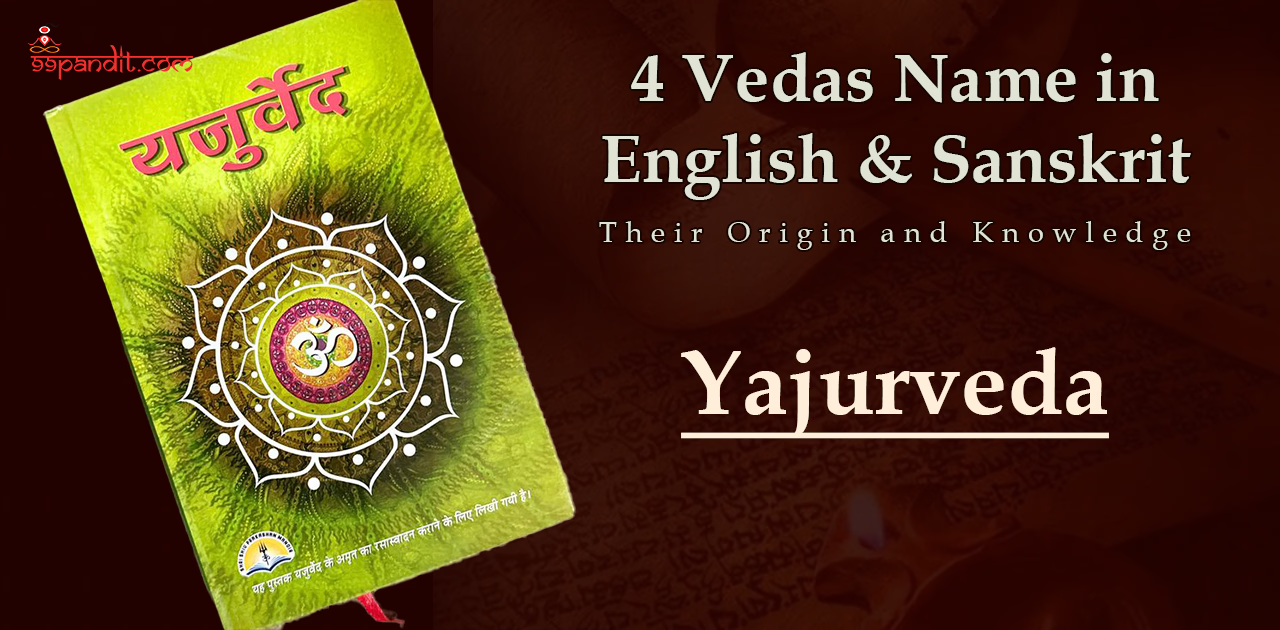
Such a vast and profound knowledge of the Vedas was passed on from generation to generation only by listening, memorizing, and singing. This is why they are called “Shruti” – the knowledge that was heard and absorbed.
In that era, the sages and saints would listen to the divine sounds through deep meditation and sadhana and make them memorise them by reciting them to their disciples.
The Guruji would make his disciples recite the mantras repeatedly, and they would memorize them by repeating them in the same rhythm, tone, and pronunciation.
This tradition was so strong that not a single word, vowel, or syllable of the Vedas changed for thousands of years.
The Veda is not just a collection of words, but vowels and rhymes are also significant in them. A slight error in pronunciation could change the meaning of the mantra.
Therefore, the sages developed special pronunciation methods called “Paath”—such as Jata Paath, Ghan Paath, Kram Paath, etc.
Through these methods, the disciples memorized the mantras by singing them repeatedly in different ways, so that there was no possibility of mistake.
When Maharishi Vedavyasa arranged the Vedas in four parts, he assigned each Veda to his disciples. These disciples further created their own branches (recensions).
Each branch was preserved in a special Gurukul. Thus, the Vedas were not limited to only one family or region, but were preserved by spreading all over India.
In Gurukuls, students were taught the Vedas from a young age. They observed celibacy, served their Guruji, and practised mantras for hours daily.
Their memory was so strong that they could memorize thousands of mantras without any mistakes.
It was this discipline and austerity of the Vedapathis that kept the Vedas pure and unchanged.
It was only after about 500 BC that attempts were made to put the Vedas in written form. Until then, they were carried on through oral tradition only.
Even today, many Vedapathi traditions are carried on orally, and UNESCO has recognized them as “Intangible Heritage of Humanity.” This is proof that oral tradition not only kept the Vedas safe but also alive.
The oral preservation of the Vedas is a wonderful example of human memory, discipline, and devotion.
This shows that when knowledge is considered the word of God, man can do everything in his power to preserve it.
The Vedas are as pure and divine today as they were thousands of years ago, and the credit for this goes entirely to the sages and acharyas who protected the oral tradition.
Many people today think that the Vedas are just an old book read only by scholars. But the truth is that the Vedas are a life philosophy useful for every era, every time, and every person.
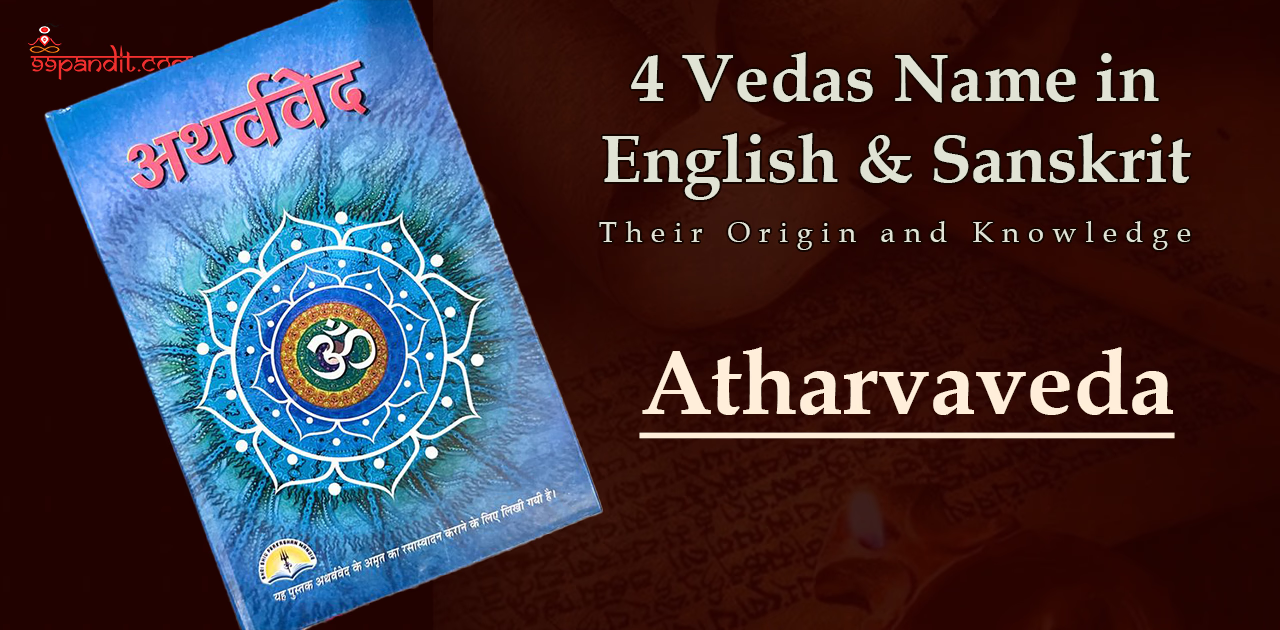
Whether today’s era is one of science and technology, the knowledge and power of the Vedas guide man in every situation.
In the mantras of the Rigveda, nature, sun, fire, wind, and water have been praised. In today’s time, its meaning is that we should respect nature, protect the environment.
Rigveda teaches that we should start our day with gratitude – bowing to the sun, considering fire as sacred, and considering water as the basis of life. This brings positivity and peace to a person.
The Yajurveda teaches us the importance of rituals and discipline in life. Through the mantras of yagna and havan, it tells us that every human action should benefit society.
The meaning of Yajurveda in today’s busy life is to live your day with discipline, respect time, and do your work without any hassle. If we adopt this knowledge, we can maintain work-life balance and inner peace.
Samveda is also called the “Veda of Music“. Its mantras were sung. Even today, we see that music heals every human being. Stress, depression, anxiety – music therapy is a great remedy to fight all these.
Samaveda tells us that singing bhajans, kirtans, and mantras purifies the mind and awakens the feeling of devotion. Meaning, Samaveda is still an eternal treasure for music lovers.
Atharvaveda is considered the “Veda of daily life”. It contains knowledge about health, medicine, relationships, and social life.
Herbal medicines, positive thoughts, remedies for peace – all these are found in the Atharvaveda.
In today’s modern lifestyle, where people are troubled by stress and health issues, Atharvaveda provides a holistic healing solution.
The Vedas have always been universal knowledge – neither limited to India nor to just one religion. Even today, their relevance is as much as it was in ancient times.
If every person brings even a small part of the knowledge of the Vedas into their life, then peace, prosperity, and positivity will automatically come into their life. That is why the Vedas are not just a religious text, but a lighthouse for human life.
The four Vedas are not only textbooks, but also the most ancient source of knowledge, science, and culture.
Many things hidden in them still attract people. Let us know some interesting facts related to the four Vedas:
All 4 Vedas are considered to be the soul of Sanatan Dharma. It is a religious text and a complete guide for life.
The Rigveda teaches us about the worship of gods and faith in nature. The Yajurveda teaches us the importance of karma and yajna.
The Samaveda teaches us the essence of devotion and music. The Atharvaveda teaches us the rules of medicine and daily life.
The knowledge of the Vedas is inhuman, that is, it was not written by any human being; instead, God sent it down in the form of Shruti in the hearts of sages.
The Guruji-disciple tradition protected it and made it reach us till today. Even today, the Vedas teach us to live a balanced and peaceful life.
They tell us how to maintain harmony with nature, physical and mental health, and love and respect in society.
Therefore, the Vedas are not only religious texts for us, but also a treasure of knowledge useful in every aspect of life. Studying them and reciting their mantras always makes life pure and meaningful.
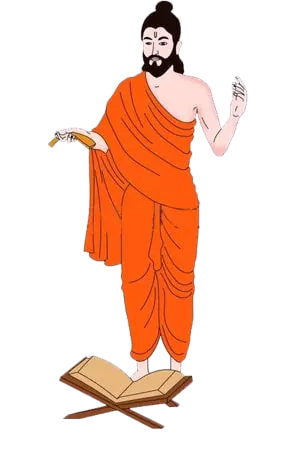
100% FREE CALL TO DECIDE DATE(MUHURAT)

Table Of Content
Filters by categories
All Pujas
Puja On Special Events
Upcoming Pujas
Dosha Nivaran Pujas
Mukti Karmas
Filters by Trending Topics
Filters by Regions
North Indian Pujas
South Indian Pujas